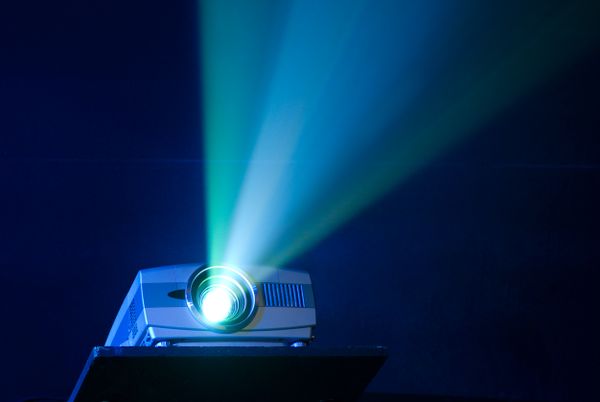
At a Glance:
What Makes a 4K Projector Special for Home Theaters
Essential Factors for Choosing Your Perfect Projector
Projector Technology Comparison: Laser vs LED vs Lamp
What to Look for in a Home Theater Projector: Advanced Features
Why Trust Carolina Custom Sound?
Picture this scenario: friends gather for movie night, the lights dim, and suddenly a massive 120-inch display transforms the living room into a private cinema. That magical moment happens when someone has chosen the best 4k projector for home theater setup that perfectly matches their space and viewing habits.
The journey to creating an immersive home theater experience starts with understanding what separates exceptional best 4k projector for home theater options from mediocre ones. Smart buyers using a projector buying guide know that resolution alone doesn't guarantee stunning picture quality - the magic lies in how brightness, contrast, color accuracy, and smart features work together to deliver that jaw-dropping cinematic experience.
Explore Your Projector Options
With so many projectors available on the market, it can be challenging to find the right one. Why not consult the experts at Carolina Custom Sound for their professional advice? Visit us or explore our options online today to discover the perfect fit for your home theater.
Projector CatalogWhat Makes a 4K Projector Special for Home Theaters
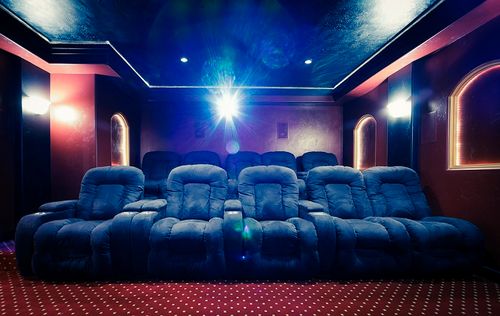
The best 4k projector for home theater technology delivers 8.3 million pixels (3840x2160 resolution), providing four times the detail of standard 1080p displays. This enhanced pixel density becomes dramatically noticeable on screens larger than 100 inches, where every texture, shadow, and facial expression appears with remarkable clarity.
Modern home theater projectors utilize advanced pixel-shifting technology with Digital Light Processing (DLP) chips, creating smooth motion handling and eliminating the "screen door effect" that plagued earlier projection systems. High Dynamic Range (HDR) support, including HDR10+ and Dolby Vision formats, expands color gamuts and brightness ranges to match what directors intended audiences to see.
Learn more: The Home Theater Design Process in Winston-Salem NC
Essential Factors for Choosing Your Perfect Projector
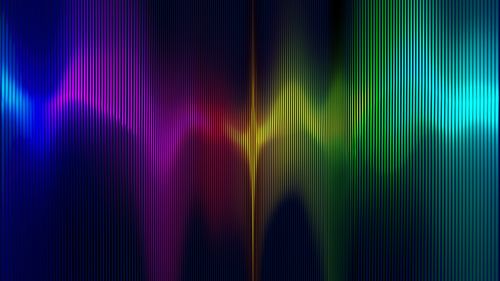
Brightness: The Foundation of Great Picture Quality
Brightness, measured in ANSI lumens, determines how well the projector performs in different lighting conditions. This specification literally makes or breaks the viewing experience, regardless of how advanced other features might be.
- Dark Room Theater Setup (1,000-2,200 ANSI Lumens): Dedicated home theaters with complete light control achieve stunning results with lower brightness levels. These environments allow for deeper blacks, more vibrant colors, and that authentic cinema atmosphere that movie enthusiasts crave.
- Living Room Integration (2,200-3,000 ANSI Lumens): Multi-purpose rooms with some ambient light require higher brightness levels to maintain picture clarity. This range handles typical evening viewing with table lamps or slight window light without washing out the image.
- Bright Environment Viewing (3,000+ ANSI Lumens): Rooms with large windows, daytime viewing sessions, or significant ambient lighting need maximum brightness capabilities. These powerful projectors maintain image quality even when competing with room lighting.
Contrast Ratio: Creating Depth and Drama
Contrast ratio determines the difference between the darkest blacks and brightest whites the projector can display. Higher contrast ratios (ideally 10,000:1 or better) create more dramatic images with better shadow detail and more vibrant colors. This specification particularly impacts horror movies, space scenes, and any content with significant dark areas.
Resolution and Image Processing
While the best 4k projector for home theater resolution provides the pixel count, image processing determines how those pixels perform. Look for projectors with advanced scaling capabilities that enhance lower-resolution content, motion interpolation for smooth sports and action scenes, and multiple picture modes optimized for different content types.
Lens Options and Flexibility
Lens specifications directly impact installation flexibility and image quality. Key considerations include:
- Zoom Range: 1.3x to 2.0x zoom ratios allow positioning flexibility without compromising image sharpness. Higher zoom ranges provide more installation options but may slightly reduce brightness.
- Lens Shift: Horizontal and vertical lens shift capabilities (±15% horizontal, 0-60% vertical) enable proper image alignment without keystone correction, which can degrade picture quality.
- Focus Quality: Premium projectors feature motorized focus and zoom controls with memory settings for different aspect ratios and content types.
Learn more: A Deep Dive into the Best Television for Sports Viewing
Projector Technology Comparison: Laser vs LED vs Lamp
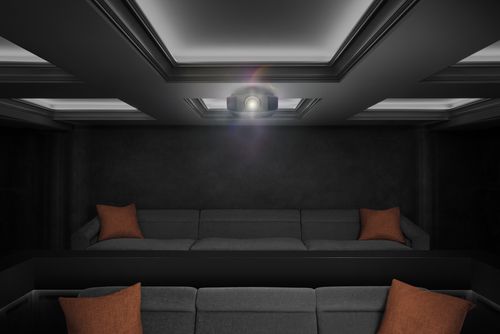
Laser Projectors: Premium Performance
Laser light sources offer exceptional longevity (20,000-30,000 hours), instant on/off capabilities, and superior color accuracy. These projectors maintain consistent brightness throughout their lifespan and provide wider color gamuts, particularly excelling in DCI-P3 color space reproduction. The higher upfront cost pays dividends through lower maintenance and superior performance.
LED Projectors: Energy Efficient Innovation
LED technology provides excellent color reproduction, energy efficiency, and compact designs. These projectors typically offer 15,000-20,000 hour lifespans with minimal brightness degradation over time. LED projectors excel in smaller rooms and portable applications, though they may lack the raw brightness power of laser alternatives.
Traditional Lamp-Based Projectors: Budget-Friendly Options
Lamp-based projectors offer lower initial costs but require bulb replacements every 2,000-4,000 hours. Modern lamp technology provides excellent brightness levels and color performance, making these projectors attractive for budget-conscious buyers who don't mind occasional maintenance.
Matching Projector Specifications to Room Conditions
Small Rooms (8-12 Foot Screen Distance)
Compact spaces benefit from home cinema projector options with short throw capabilities and moderate brightness levels (1,500-2,500 lumens). Focus on models with excellent near-field performance and quiet operation, since viewers sit closer to the unit.
Medium Rooms (12-16 Foot Screen Distance)
Standard throw projectors work perfectly in medium-sized rooms, providing flexibility for 100-120 inch screens. These setups accommodate most home theater installation North Carolina projects and offer the best balance of performance and placement options.
Large Rooms (16+ Foot Screen Distance)
Spacious rooms allow for massive screen sizes (130+ inches) and benefit from high-brightness projectors with long throw capabilities. These installations often involve custom home theater Charlotte NC professionals who can optimize placement and calibration.
Connectivity and Smart Features That Matter
Modern home theater projector options must handle diverse input sources and streaming requirements. Essential connectivity includes:
- HDMI 2.1 Ports: Support for 4K@120Hz gaming, Variable Refresh Rate (VRR), and Auto Low Latency Mode (ALLM) for next-generation consoles and PC gaming.
- Enhanced Audio Return Channel (eARC): Enables high-quality audio passthrough to external sound systems without additional cables or signal degradation.
- Wireless Capabilities: Built-in Wi-Fi, screen mirroring, and native streaming apps eliminate cable clutter and provide convenient content access.
- Smart Platform Integration: Android TV, Roku, or proprietary smart platforms with regular software updates and comprehensive app support.
Practical Installation and Setup Tips
Choosing the Right Projector Screen
Screen selection dramatically impacts picture quality and viewing experience. Consider these factors:
- Fixed Screens: Provide the flattest surface and best picture quality for dedicated theaters. Available in various gain levels to optimize brightness and viewing angles.
- Motorized Screens: Offer convenience and room flexibility, automatically deploying for movie time and retracting for normal room use.
- Screen Gain: Higher gain screens (1.3-1.8) reflect more light but narrow viewing angles. Lower gain screens (0.8-1.0) provide wider viewing angles with slightly dimmer images.
Mounting and Positioning
Ceiling mounts provide the most flexible positioning options and keep projectors secure. Calculate throw distance carefully using manufacturer specifications to ensure proper screen size and image quality. Account for lens shift capabilities when determining exact mounting locations.
Calibration for Optimal Performance
Professional calibration maximizes projector performance through color temperature adjustments, gamma correction, and geometric alignment. Many projectors include preset modes for movies, sports, gaming, and general viewing that provide excellent starting points.
What to Look for in a Home Theater Projector: Advanced Features
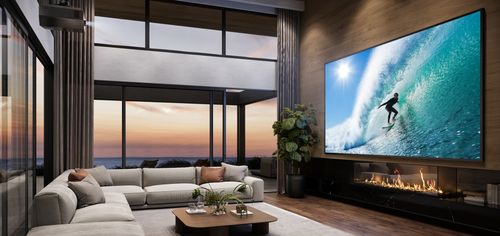
HDR Implementation
High Dynamic Range support varies significantly between projectors. Look for models that properly map HDR content to their brightness capabilities rather than simply accepting HDR signals. Tone mapping algorithms determine how well the projector displays HDR content within its brightness limitations.
Color Accuracy and Gamut
Wide Color Gamut (WCG) capabilities, particularly DCI-P3 coverage, ensure accurate color reproduction for modern content. Projectors covering 100% DCI-P3 in HDR mode provide significantly more vibrant and accurate colors than those limited to Rec. 709 color space.
Gaming Performance
Modern 4k projector options increasingly focus on gaming capabilities with low input lag (under 50ms), high refresh rates (120Hz), and gaming-specific picture modes. Variable Refresh Rate support eliminates screen tearing for smooth gaming experiences.
Budget Planning and Value Considerations
Entry-Level Options ($1,500-$2,500)
Budget-conscious buyers can find excellent home theater projectors with true 4K resolution, decent brightness levels, and essential smart features. These projectors excel in dark room environments and provide significant upgrades over 1080p alternatives.
Mid-Range Excellence ($2,500-$4,000)
Mid-tier projectors offer enhanced brightness, better color accuracy, laser or LED light sources, and comprehensive connectivity. These models balance performance with value for most home theater applications.
Premium Performance ($4,000+)
High-end projectors deliver maximum brightness, exceptional color accuracy, advanced HDR processing, and premium build quality. These investments pay off for large screens, bright rooms, or demanding videophile applications.
Learn more: Which Brand is Best for Home Theater Systems?
Maintenance and Longevity
Lamp-Based Projector Care
Traditional lamp projectors require filter cleaning every 500-1,000 hours and lamp replacement every 2,000-4,000 hours. Budget approximately $200-$400 for replacement lamps and factor this into total ownership costs.
Solid-State Projector Benefits
Laser and LED projectors require minimal maintenance beyond occasional filter cleaning. Their 15,000-30,000 hour lifespans translate to decades of typical home use without major component replacements.
Creating the Ultimate Viewing Environment
Room Preparation
Dark walls, ceilings, and flooring prevent light reflection that can wash out projected images. Light-colored surfaces reflect ambient light onto the screen, reducing contrast and color saturation.
Audio Integration
Consider how the projector's built-in audio compares to dedicated sound systems. Most serious home theater installations benefit from separate audio systems connected via eARC or optical connections.
Seating and Viewing Angles
Plan seating arrangements to maximize the projector's viewing angle capabilities. Premium projectors maintain color accuracy and brightness across wider viewing angles, accommodating more seating positions.
Choosing the best 4k projector for home theater transforms ordinary movie nights into extraordinary cinematic experiences. The key lies in matching projector specifications to specific room conditions, viewing habits, and performance expectations. Smart buyers who prioritize brightness for their lighting conditions, invest in quality screens, and plan for proper installation create home theaters that rival commercial cinemas. That magical moment when friends gasp at the stunning picture quality makes every decision along the way worthwhile
Contact Carolina Custom Sound today to start building your dream home theater. Our team of experts can guide you through the process and help you create a customized solution that fits your specific needs and budget.
Frequently Asked Questions
Lumen requirements depend entirely on your room's lighting conditions and screen size. Dark, dedicated theaters perform excellently with 1,000-2,200 lumens, while living rooms with ambient light need 2,200-3,000 lumens. Bright rooms or daytime viewing requires 3,000+ lumens to maintain image quality. Consider that larger screens spread the same light over more area, effectively reducing brightness per square inch.
Laser projectors justify their higher cost through superior longevity (20,000-30,000 hours vs 2,000-4,000 for lamps), instant on/off capabilities, and consistent brightness throughout their lifespan. They also provide wider color gamuts and better color accuracy than lamp-based alternatives. The higher upfront investment pays dividends through eliminated lamp replacement costs and superior performance, particularly for users who watch content regularly.
DLP projectors use microscopic mirrors on a chip to create images, resulting in sharper pictures, better contrast, and more compact designs. LCD projectors use liquid crystal panels that can produce brighter images and typically cost less. DLP technology generally provides better black levels and eliminates the "screen door effect," while LCD projectors may offer better color saturation and brightness efficiency.
Professional installation ensures optimal projector placement, proper screen selection, comprehensive calibration, and integration with existing audio/video systems. Complex installations involving ceiling mounts, in-wall wiring, or custom home theater Charlotte NC setups particularly benefit from professional expertise. DIY installation works for simple setups, but professionals maximize performance and prevent costly mistakes in positioning or calibration.
Why Trust Carolina Custom Sound?
Family-owned and operated for over 20 years. Carolina Custom Sound is a national award-winning team of well-trained professionals whose purpose is to integrate lifestyle systems into homes, offices, and other locations. We are proud to have served this community for so long and wouldn’t be here without our loyal clients. We create a more relaxing, engaging, and enjoyable automation experience for our residential and commercial clients.
Our Clemmons Showroom brings the immersive experience of our custom home installations to life with unbridled sound and audio/video which you can feel in person. Visit our Clemmons showroom or let us help you in any of our surrounding service areas like Winston-Salem, Greensboro, Lake Norman, and more!
Shop Smart Solutions at Carolina Custom Sound
At Carolina Custom Sound, we provide quality top-of-the-line brands for every project. We are known to be sticklers for details, from start to finish on every job. Our installation professionals measure, plan, design, and program with great care to make sure nothing is overlooked. Whether you call us or visit, contact us today! Let us bring your smart home vision to life.